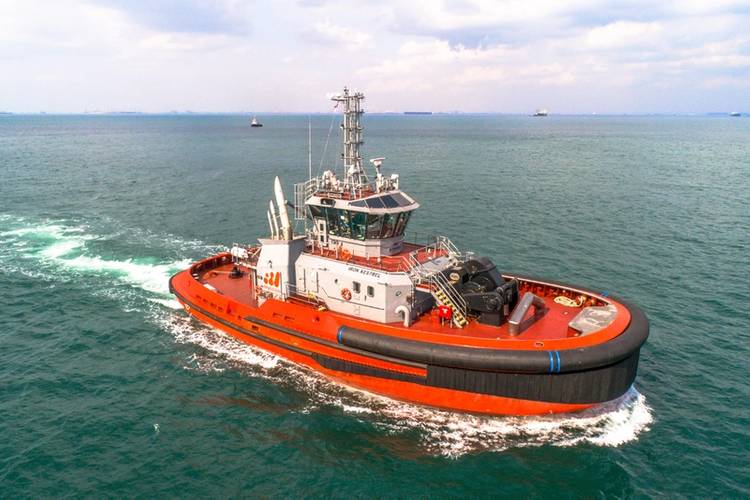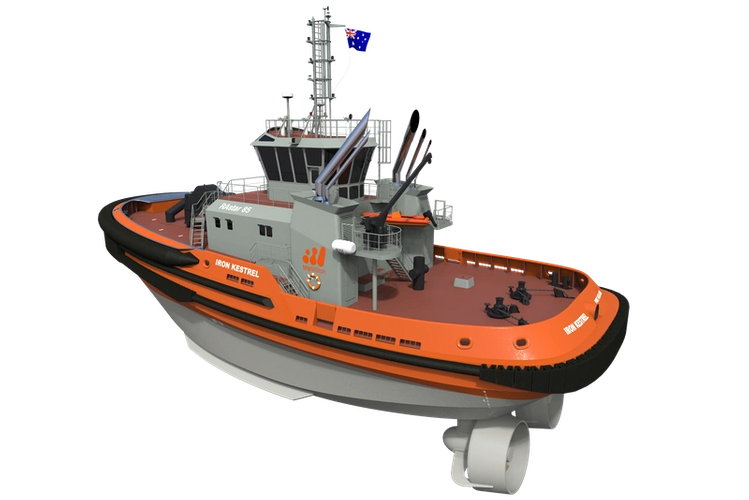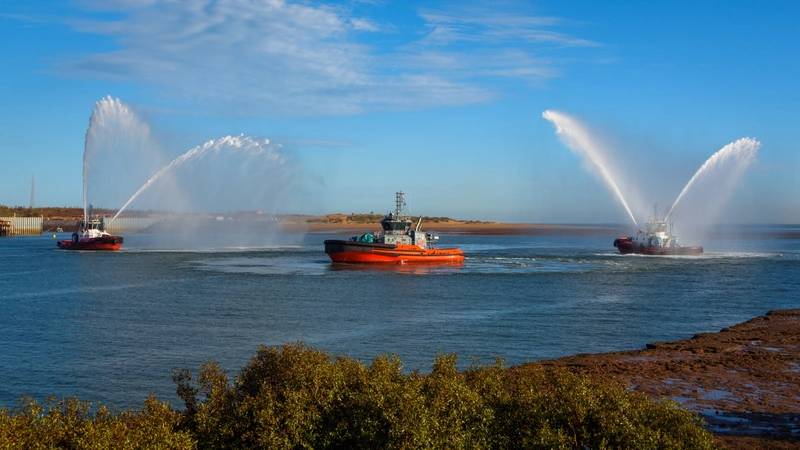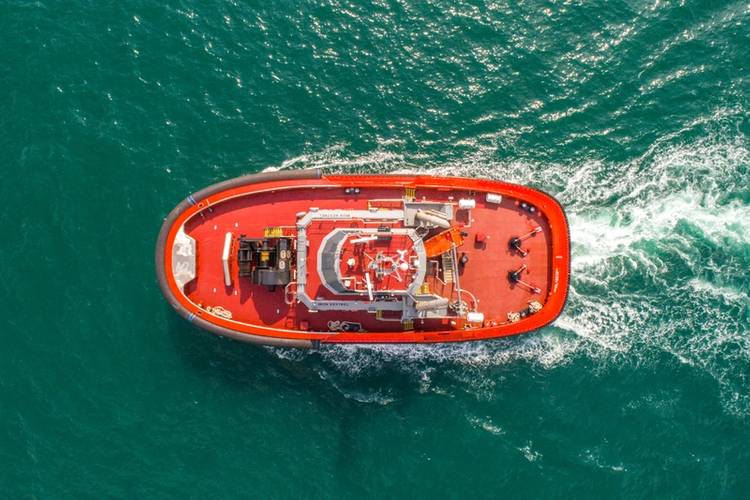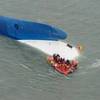With the arrival of the Iron Kestrel and Iron Corella in Port Hedland, Western Australia, the first two of BHP Billiton Iron Ore's six boat order for Robert Allan Ltd.’s RAstar 85 Class escort tugs have now been delivered by ASL Shipyards Singapore.
These modern high performance tugs will escort bulk carriers in and out of Port Hedland. They were custom designed and built to meet the environmental conditions and operational requirements of the world's busiest bulk commodity port by tonnage. Very high air and water temperatures, significant amounts of airborne ore dust, strong currents in a narrow channel and a requirement to operate up to the closing conditions of 3 meters significant wave height and 35 knot wind speed create a formidable design challenge. Adding to this are the long escort distances through exposed water and the high operational hours on the tugs putting further demands on the equipment and the operators.
Robert Allan Ltd. said its RAstar style hull form with unique sponsoned hull form that provides enhanced escort towing and seakeeping performance was chosen for the design. Guided by an extensive computer based Computational Fluid Dynamics (CFD) analyses, a large foil shaped escort skeg was designed for the hull along with a well aft-biased "Wide-A" escort staple positioned to ensure the tug would generate the required steering forces. A subsequent self-propelled model test program was conducted to verify all of the Owner's performance requirements would be met.
Particulars of the RAstar 85 tugs are as follows:
- Length: 34.94 m
- Beam: 14.75 m
- Depth (Least Moulded): 6.07 m
- Draft with 260 DWT: 6.18 m
- GT: 710
Capacities (at 98 percent):
- Fuel oil: 225 m³
- Fresh water: 32 m³
- Lube oil: 6.0 m³
- Grey water: 6.8 m³
- Black water: 6.8 m³
Propulsion and Generating Machinery:
- Two Main Engines Caterpillar C175-16 rated 2,550 kW at 1,800 rpm (IMO Tier II Compliant)
- 2 x Schottel SRP 4600 with 2.7 m controllable pitch propellers
- 2 x CAT C18 ship service gensets providing 350 ekW at 1,500 rpm
- 1 x CAT C9 genset rated 150 ekW at 1,500 rpm
Working Deck Towing Equipment:
- Towing Winch: A Markey Model DESF-48-400HP escort towing winch is fitted on the fore deck. Powered by a 400 HP, water cooled, continuous duty, electric driven motor the two-speed winch delivers a pull of 191 metric tons at 8m/min in first gear (barrel layer) and 44 metric tons at 35 m/min in second gear (barrel layer) with a braking capacity of 250 metric tons. The water cooled slip brake is designed to prevent shock load damage to the winch and it's gearing. The under-spooled single drum is sized for 200 m of 80 mm diameter towline on the main part with a 50 m working part.
- "Wide A" Staple: Located well aft for higher escort forces and designed to move the tow-point outboard away from the house works when conducting powered indirect maneuvers, the wide staple also acts to provide a righting moment when heeled over during escort operations. The staple is engineered to a design load of 400 metric tons.
- Karmoy Escort Tow Pins: Fitted forward for use in transit escort mode is a set of 350 mm diameter stainless steel retractable escort towing pins with a SWL of 140 metric tons. These hold the hawser in position and prevent the tug yawing when running at speed with a relatively light line behind the tug. When required to operate in indirect mode the pins are rapidly dropped and the line moves aft to the staple.
In order to keep the main working deck as clear as possible to provide a safe working area, the anchoring equipment was fitted at the stern of the vessel. The aft deck also features a 300 metric ton SWL cyclone mooring bitt and fairlead in the aft bulwark.
The vessels are very heavily fendered for the expected high swells that are often present. Bow fendering consists of a 1,000 mm diameter cylindrical fender secured by radial chains and extending well aft along with a lower course of 450 mm thick W-fender. Sheer fendering is 350 x 350 mm D-fender. Stern fendering is 450 mm thick W-fender.
Crew accommodations are arranged with the main deck featuring a generous sized mess and galley, a large office that can be used as a spare cabin, and a locker room with laundry facility. The lower deck includes five MLC compliant cabins able to accommodate eight crew in total. The wheelhouse features a single Alphatron control console with winch operator position. Visibility to the forward working deck is exceptional.
Due to the harsh environmental conditions, significant effort was placed on designing for durability and maintainability, the designer said. For example, extensive use of stainless steel was included on the exterior of the vessel including railings, stairs, louvres, etc.
The vessels have been constructed to Lloyd's Register Class requirements with the following notation: LR + 100A1 TUG, + LMC, UMS, IWS
On trials, the vessels exceeded all performance expectations achieving in excess of 85 metric tons bollard pull, with a free running speed ahead of 13.9 knots, and free running speed astern of 13.5 knots.











